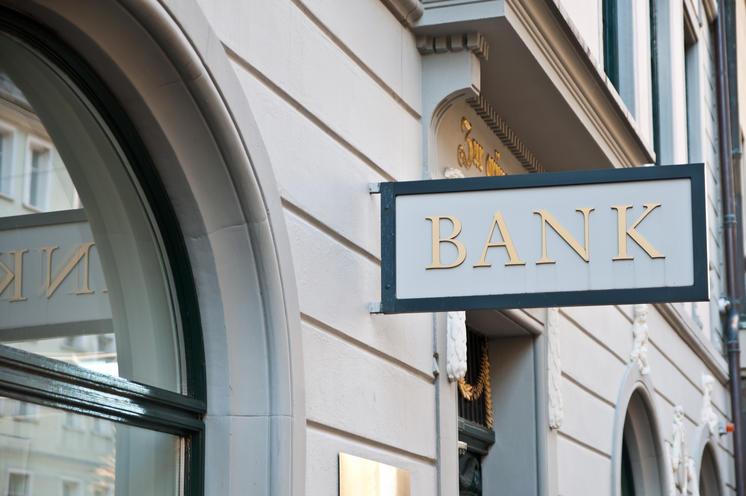Weekly Thoughts by Mirabaud Securities -12 April 2019


A Chinese proverb says “When you reach the top of the mountain, keep climbing”. We're almost there. Although technically the indices are very close to reaching their historical highs, over the past week they remain unchanged. This was due to obvious profit taking, but also many uncertainties (Brexit, ECB meeting, Fed Minutes or even the beginning of the earning season).
In the US, the largest sectoral increases were due to consumer staples and technology. However, industry and healthcare have lagged behind. In Europe, it was the CAC 40 that was the leader (thanks to the luxury sector) and the IBEX lagged behind (bank stocks weighed heavily). Finally, in Asia, we saw a general profit-taking over the week as all major indices finished in red.

In the G10 universe (in dollars), it is the Swiss Franc that has suffered the most this week. The Nordic currencies were the biggest gainer (Norway and Denmark). The British pound gained almost 0.5% after Brexit delayed to Halloween. It is interesting to notice that the Euro gained a half percent against the dollar after 7 days. In emerging markets (still in dollars), the Argentine Peso grew by almost 2.5%, ahead of the Russian Rouble and the Mexican Peso. The only significant decreases were the Turkish Lira and the Malaysian Ringgit.

The stock market rally we have seen since December 24th has been driven by most sectors. However, two important sectors were missing: the automotive and banking sectors. If we put aside the automotive sector the earnings season may mark the renewal of the banking sector.
There are several technical arguments that could argue in favour of an increase in bank values, including: Valuation (the banking sector is the only one that is currently trading below its book value) or Mergers (consolidation in the banking sector is a major argument for returning investors' appetite). In addition, the launch of the new TLTROs in September or an ECB solution to limit the impact of negative rates on banks are also arguments in favour of a technical rebound in this unloved sector.

In our SWOT analysis, Italy is one of our threats: Italian government behaviour. We were (unfortunately) right. Tuesday, the Italian Treasury raised this year’s budget deficit target to 2.4 percent of GDP from a 2.04 percent goal set in December after a drawn-out tussle with the European Commission.
As a reminder, the new deficit target is the… same as the one the Commission rejected last Fall as being too high and breaking EU rules. Italy, whose public debt is proportionally the highest in the Euro zone after Greece, is struggling to hold its finances in check while keeping costly promises made by the right-wing League and the anti-establishment 5-Star Movement.
The government will update its targets again in September, when it will have to find a way to avoid some 23 billion euros of hikes in sales tax scheduled to take effect in 2020, but which the ruling parties have promised to scrap. We are now expecting a firm and negative answer from Brussels.

Difficult to describe Hermès. Maybe with a simple number: 600. This is the level (in Euros) that the stock reached this week, close to its record level of June 2018 (612 Euros). For 3 years the stock price has gained 100% or 550% (!) in only 10 years despite the company’s maturity and many headwinds: Deceleration of the Chinese growth, excessive valuation, Brexit, evolution of consumer fashion or even the fact that analysts like to hate the company since its IPO on June 7th, 1993.
Who knew that for a single "classic" bag (but is there really any classic bags at Hermès?), a craftsman must work at least 20 hours or 25 hours for a saddle? The timeless brand has also managed to adapt by offering online sales of rare efficiency. Hermès is an ultra-luxury success story, without any doubt. With limited distribution, exclusivity and controlled marketing, the overall company and many of its product categories have regularly registered double-digit growth rates year-on-year.
This is a true reflection of the Hermès brand strength among the highly affluent segments of the global population. The company has successfully kept alive and strengthened a brand differentiated through strong history, exquisite craftsmanship and superior quality.
Several hot topics were discussed this week, including:
Earning season / Can we buy European bank today? / Green Bonds are back / ECB meeting / Fed Minutes / Africa, finally
Please feel free to ask for more information if interested.
“(US) Level of confidence fade” (WEAKNESSES) is on the cliff this week. Consumer confidence surged in February and rose for the first time in four months, a sign that Americans have regained optimism after the recovery in the U.S. stock market, the end of the government shutdown and diminished worries about recession.
“Hard and Soft Brexit” (Opportunities & Threats) is on the cliff this week after the Brexit was postponed to 31 October. There is still a risk, however, that the House of Commons will approve the withdrawal agreement before May 22nd.
SWOT stands for Strengths, Weaknesses, Opportunities and Threats, the French equivalent of FFOM analysis (Forces, Faiblesses, Opportunités et Menaces). While SWOT analysis can be used to develop a company's marketing strategy and evaluate the success of a project (by studying data sets such as company's strengths and weaknesses, but also competition or potential markets), I decided several years ago to adapt it as a way to analyse financial markets. SWOT analysis allows a general development of markets by crossing two types of data: internal and external. The internal information taken into account will be the strengths and weaknesses of the market. The external data will focus on threats and opportunities in the vicinity. Finally, and most interestingly, there is a table that will evolve according to current events, which will allow it to reflect the underlying trend in the financial markets on a weekly basis.
This publication is prepared by Mirabaud. It is not intended to be distributed, disseminated, published or used in any jurisdiction where such distribution, dissemination, publication or use would be prohibited. It is not intended for people or entities to whom it would be illegal to send such publication.
Read more
Author
Continue to
